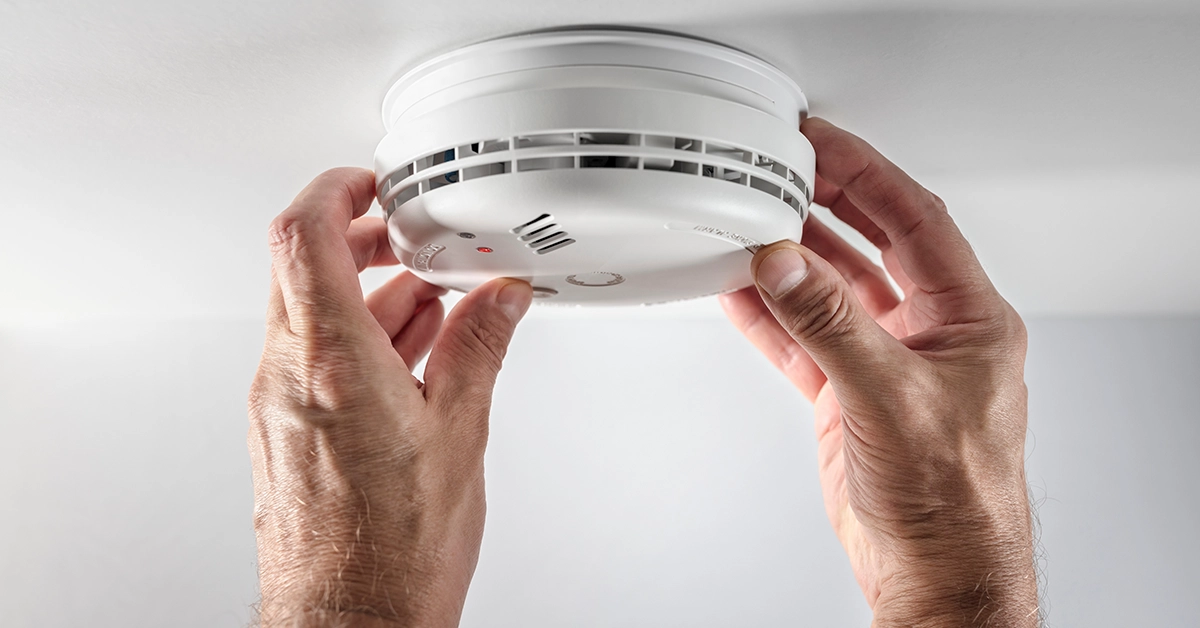Stay Safe in a House Fire

There’s nothing more unnerving than smelling smoke or seeing open flames inside your home. The National Fire Protection Association (NFPA) reports that you have as little as one or two minutes to get out of a house after the smoke or fire alarms sound. To help take control in such a stressful situation, be prepared, and know how to properly operate a home fire extinguisher.
Install alarms and create an evacuation plan
Before learning how to use an extinguisher, it’s best to make a fire emergency and evacuation plan for your household. According to NFPA, your ability to get out of a house fire depends on advance warning from smoke alarms and from advance planning. Be sure to install smoke alarms in every sleeping room and outside each sleeping area, and on each level of your home. Consult with your local fire department for specific advice regarding proper location of smoke alarms to ensure maximum protection. Walk through your house and identify all potential escape routes and exits. Include all household members in this planning stage to ensure everyone knows what to do when an emergency happens. With some preliminary safety work done, you can focus on fire suppression using a home fire extinguisher. While a fire extinguisher will likely not put out the entire fire, it can provide a few valuable additional seconds or minutes to get loved ones to safety.Choose and place fire extinguishers in your home
The NFPA recommends placing a fire extinguisher on each floor of your house, close to exits. Choose an extinguisher for home use—one that can be used for three types of common home fires (combustibles, flammable liquids, or electrical). These extinguishers are labeled as “A-B-C”. Type A extinguishers are for ordinary materials like cloth, wood, and paper. Type B are for flammable liquids like grease, gasoline, and oil. And Type C is for electrical appliances and tools. While some homeowners purchase a separate fire extinguisher for each specific purpose, consider purchasing one marked “A-B-C” to insure you can use it with most types of house fires. You don’t want to have to take time to make the choice about which fire extinguisher to use in an emergency situation.Use a fire extinguisher only when it’s safe to do so
It’s advisable to only use an extinguisher when you can answer “yes” to the following questions from the United States Fire Administration (USFA):- Did you alert others in the house that there’s a fire?
- Has someone called 9-1-1?
- Are you physically able to lift and use the fire extinguisher?
- Is the fire small or contained to a single object like a stove-top pan or trash can?
- Do you have a clear escape route?
Don’t PASS on knowing how to use an extinguisher
Operating a fire extinguisher is easier in an emergency if you remember the following acronym, PASS:- Pull the pin. With the nozzle pointing away from you, release the locking mechanism.
- Aim low, pointing the extinguisher toward the base of the fire.
- Squeeze the lever slowly and evenly.
- Sweep the nozzle from side to side.